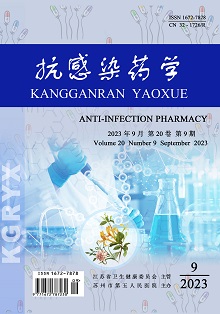GUI Lai, ZHANG Gui-fen, WANG Jian
Objective: To analyze the epidemiological characteristics of adverse drug reactions (ADRs) caused by levofloxacin in a hospital and provide a reference for clinical medication safety of levofloxacin. Methods: The ADR reports of 117 patients caused by levofloxacin reported by Changshu No. 1 People's Hospital from January 2018 to December 2022 were selected as the research data, and the information of the patients such as age, sex, disease, specifications, usage and dosage and route of administration of levofloxacin, as well as organs involved, clinical manifestations and final outcomes of ADRs was collected to analyze the epidemiological characteristics of ADRs caused by levofloxacin. Results: In the ADR reports of 117 patients, there were more females than males (78 vs 39); the patients mainly suffered from the lower respiratory tract infections (33 cases, 28.21%), digestive system infections (23 cases, 19.66%), female pelvic infections and its adnexal infections (22 cases, 18.80%) and urinary tract infections (17 cases, 14.53%). According to the ADR reports of 117 patients, 7 specifications (4 injections, 3 tablets) of levofloxacin were involved; the injections were involved in 110 patients (94.02%), and tablets were involved in 7 patients (5.98%). The dosage regimens of levofloxacin were mainly "0.5 g, q24h, intravenous drip" (74 cases, 63.25%) and "0.2 g, q12h, intravenous drip" (27 cases, 23.08%). The ADRs caused by levofloxacin mainly involved the patients' skin and accessory organs (66 cases, 56.41%) as well as vascular systems (18 cases, 15.38%); 8 patients had serious clinical manifestations, specifically anaphylactic shock (6 cases). After symptomatic treatment, all patients became improved (38 cases, 32.48%) or were cured (79 cases, 67.52%). Conclusion: ADRs caused by levofloxacin are more common in women and mostly occur during intravenous drips. In addition, most of the clinical manifestations are not serious, but clinically attention should be paid to the medication monitoring to ensure medication safety for patients.
